两者的对比
- @ConfigurationProperties
使用@ConfigurationProperties的时候,把配置类的属性与yml配置文件绑定起来的时候,还需要加上@Component注解才能绑定并注入IOC容器中,若不加上@Component,则会无效。
- @EnableConfigurationProperties
@EnableConfigurationProperties的作用:则是将让使用了 @ConfigurationProperties 注解的配置类生效,将该类注入到 IOC 容器中,交由 IOC 容器进行管理,此时则不用在配置类上加上@Component。
实战的Demo
@ConfigurationProperties
配置类如下:
@Component
@ConfigurationProperties(prefix = "demo")
@Data
public class DemoConfig {
private String name;
private Integer age;
}
yml配置文件
demo:
name: 张三
age: 20
测试代码
@Component
public class Test implements ApplicationRunner {
@Autowired
DemoConfig demoConfig;
@Override
public void run(ApplicationArguments args) throws Exception {
System.out.println(demoConfig);
}
}
测试去掉配置类的@Component
错误如下:

在测试代码上加上@EnableConfigurationProperties,参数指定哪个配置类,该配置类上必须得有@ConfigurationProperties注解
@Component
@EnableConfigurationProperties(DemoConfig.class)
public class demo implements ApplicationRunner {
@Autowired
DemoConfig demoConfig;
@Override
public void run(ApplicationArguments args) throws Exception {
System.out.println(demoConfig);
}
结果如下:

依然可以绑定
@EnableConfigurationProperties出现的原因
主要原因
springboot中EnableAutoConfiguration的自动装配
- EnableAutoConfiguration自动装配的作用:即把指定的类构造成对象,并放入spring容器中,使其成为bean对象,作用类似@Bean注解。
- springboot启动的时候,会扫描该项目下所有spring.factories文件。
上述所述造成spring.factories文件配置臃肿,是引入@EnableConfigurationProperties的原因
举例解释
- springboot默认扫描路径
1、springboot启动,需要扫描路径下的class文件,生成bean的定义BeanDefinition并创建bean对象,默认扫描路径是启动类所在的目录下。
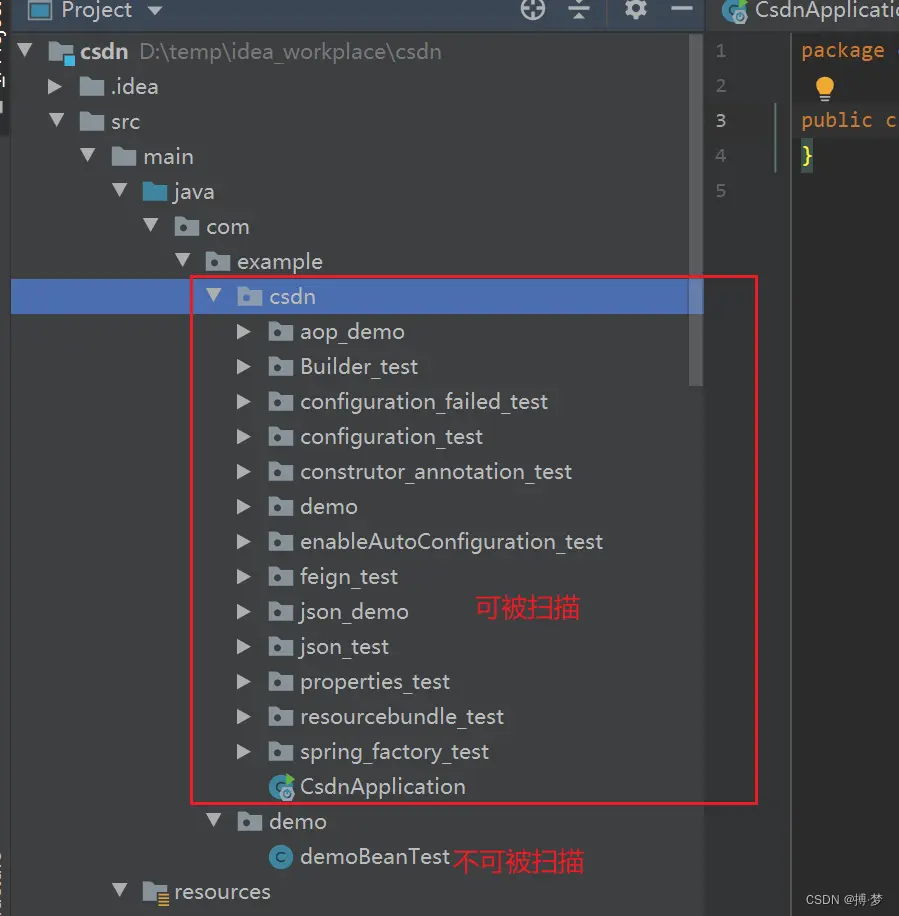
2、如图下面的测试案例: 在启动类所在包目录之外的类即使加了@Component,也无法被扫描到生成bean对象。
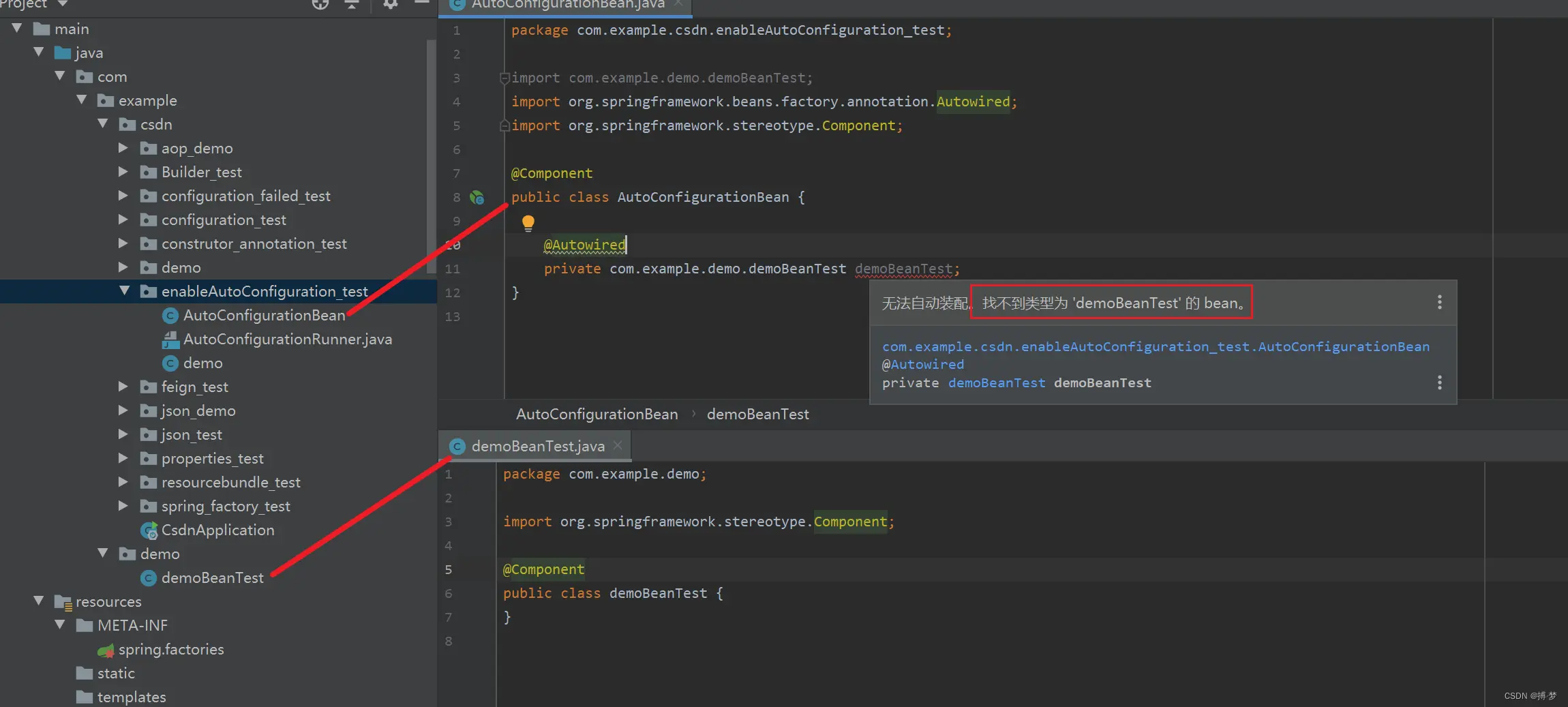

3、如果就是要扫描到启动类所在包目录之外的类,使其生成bean对象,可以在启动类上加@ComponentScan注解


引入第三方jar包(里面也有bean对象)
1、这里使用本地自己打包的jar包(SDK)作例子 2、准备一个测试的SDK:
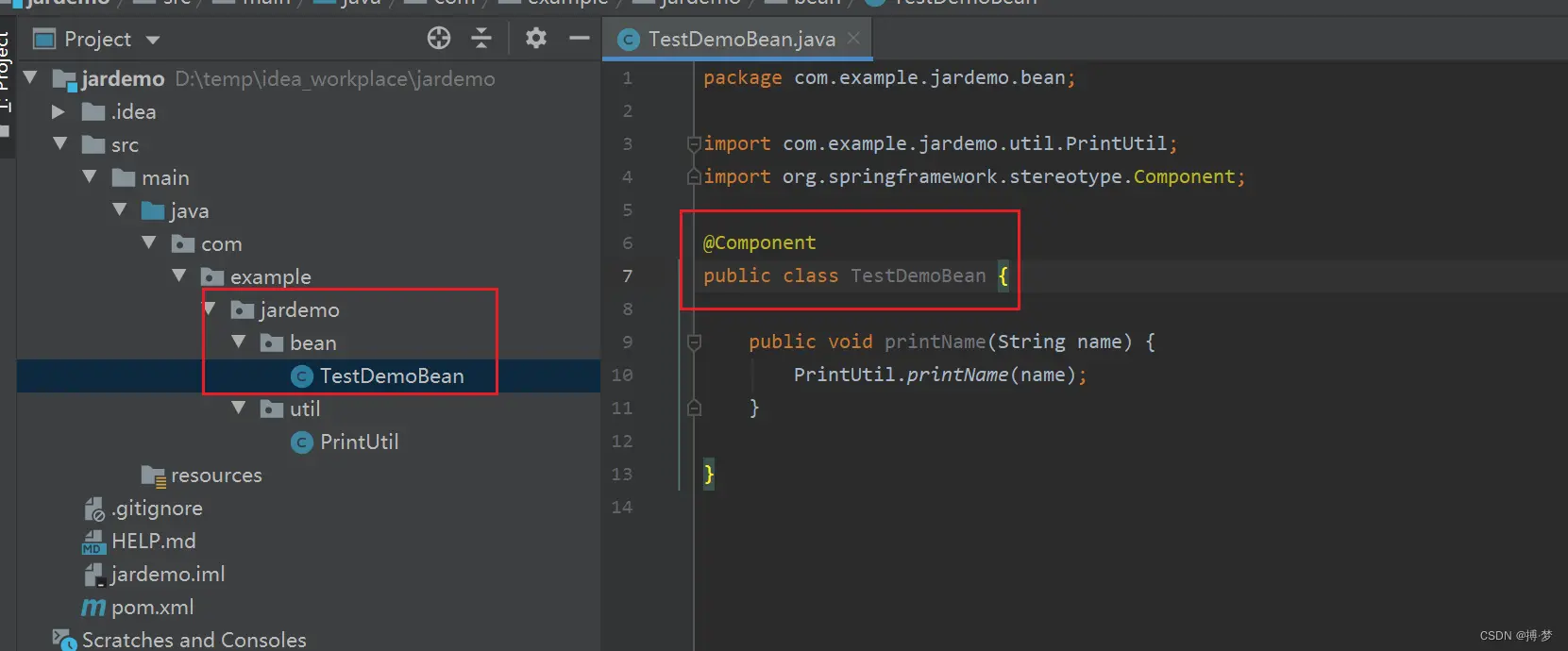
在测试项目中引入该SDK:
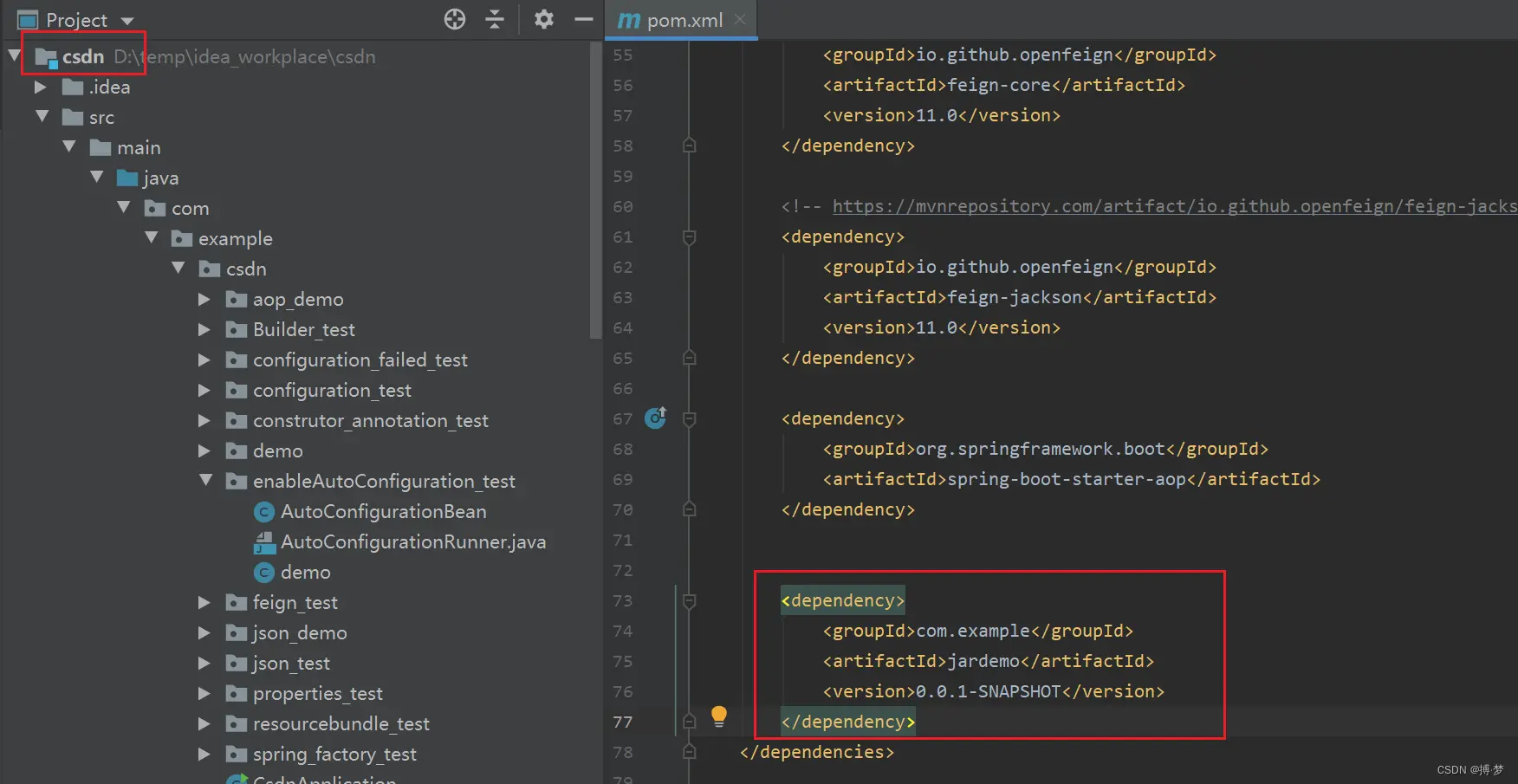
3、进行测试验证
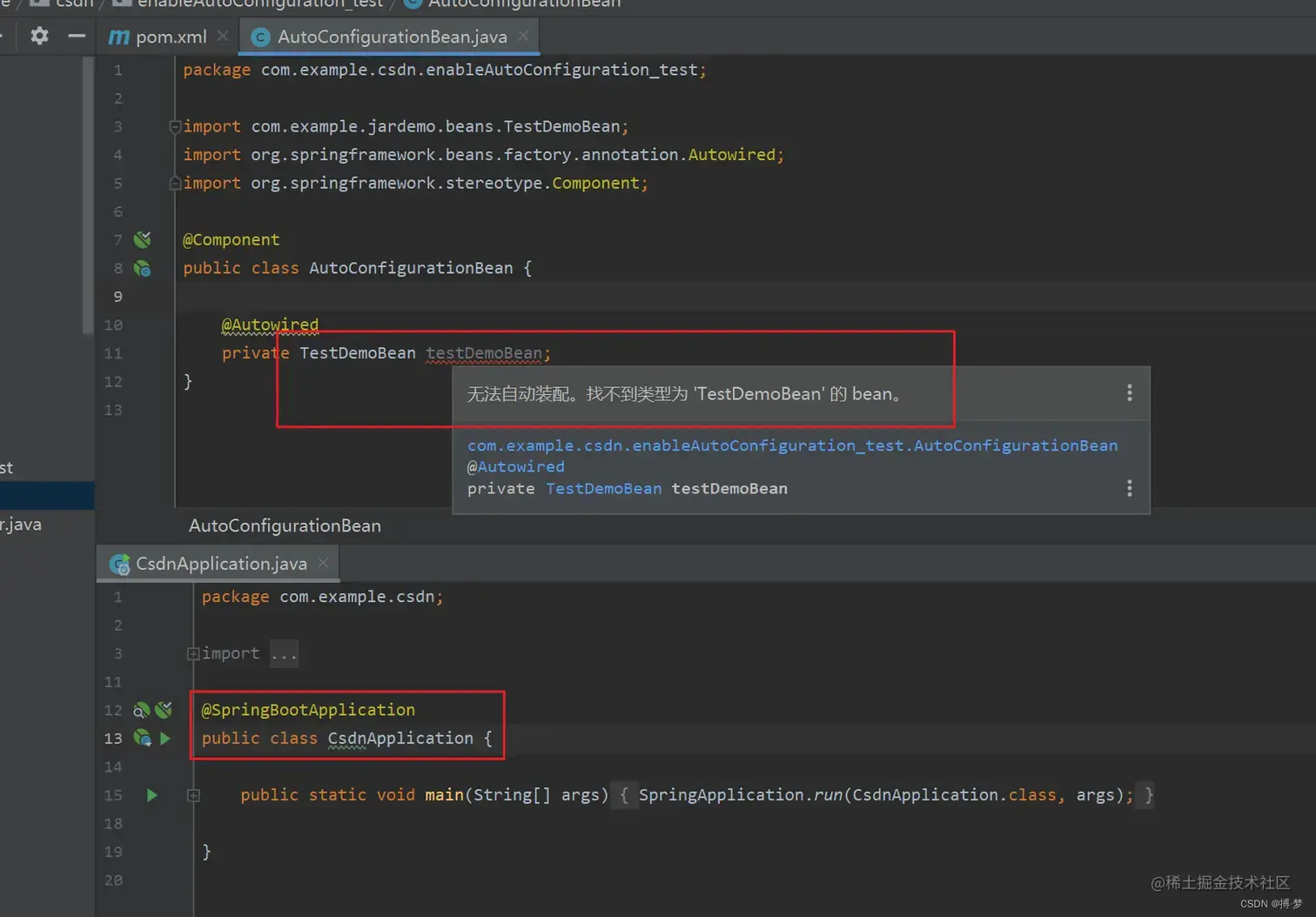
从上述图片可以看出,我们引入SDK之后进行使用,会报找不到该bean对象,奇怪,SDK的TestDemoBean类不是加了@Component注解吗?这就跟第一大点,springboot默认扫描路径有关系,SDK中的TestDemoBean路径是com.example.jardemo.xxxx, 而测试项目中的扫描路径是:com.example.csdn,自然springboot启动无法扫描到。
4、提问:
有的人会说:这不简单,在启动类上加上:@ComponentScan(“com.example”) 就好了。
确实这样子就可以使用SDK中的bean对象了,但是你想想看,这个SDK刚刚好是com.example开头,与本测试项目前缀有重复的,倘若有其他SDK,如zki.example、abc.demo、king.shuai.demo…等等,此时你的@ComponentScan要怎么写呢?
再说了,什么是SDK?是组件,是为了更加方便开发才存在的,**你提供的SDK,还要别人指定要扫描你的包路径,这岂不是很失败**?
==解决:使用EnableAutoConfiguration自动装配==
5、修改SDK,添加配置文件spring.factories
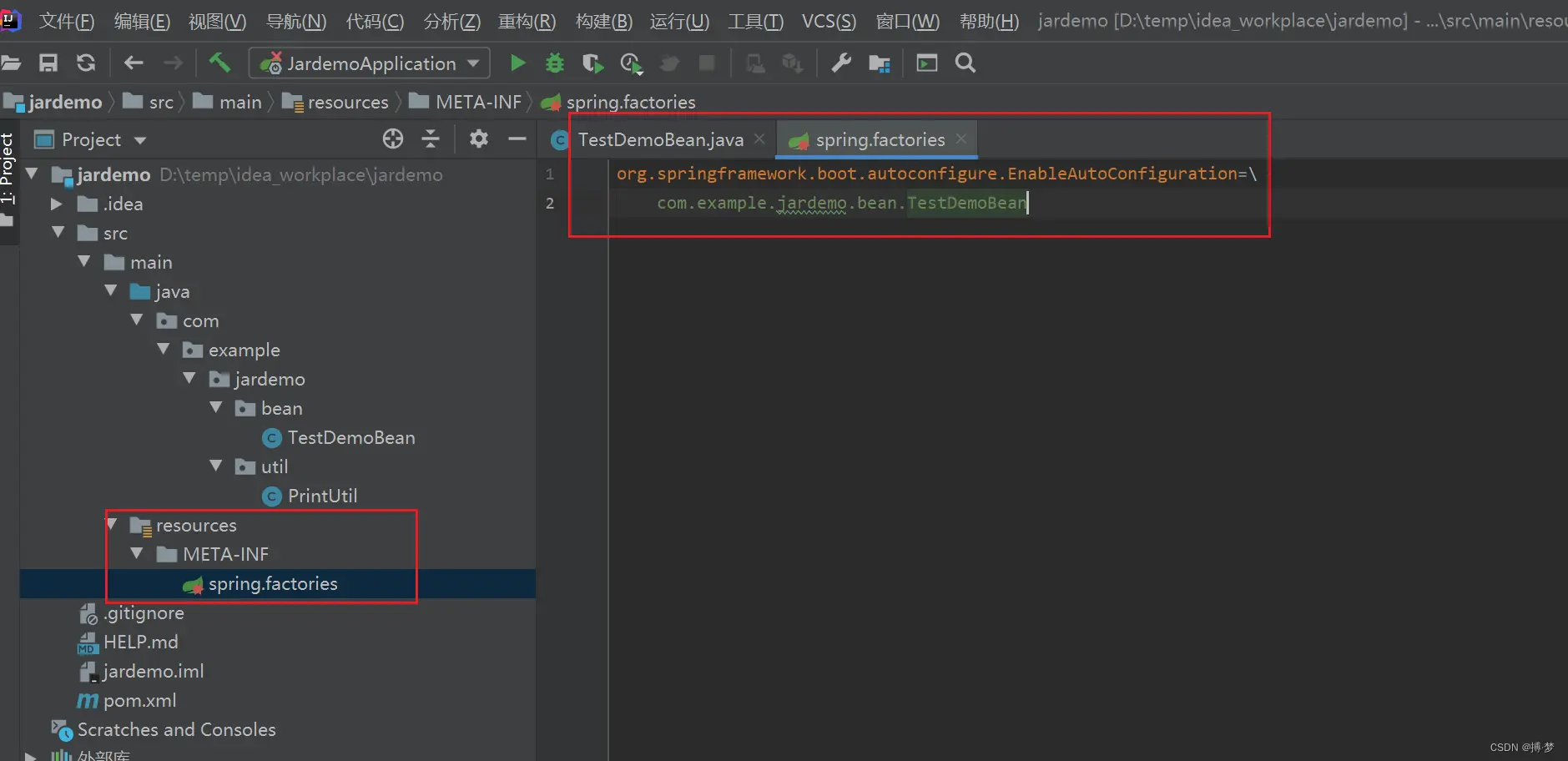
重新打包放入仓库中,记得重新加载一下引入的jar包,查看如下出现spring.factories文件:
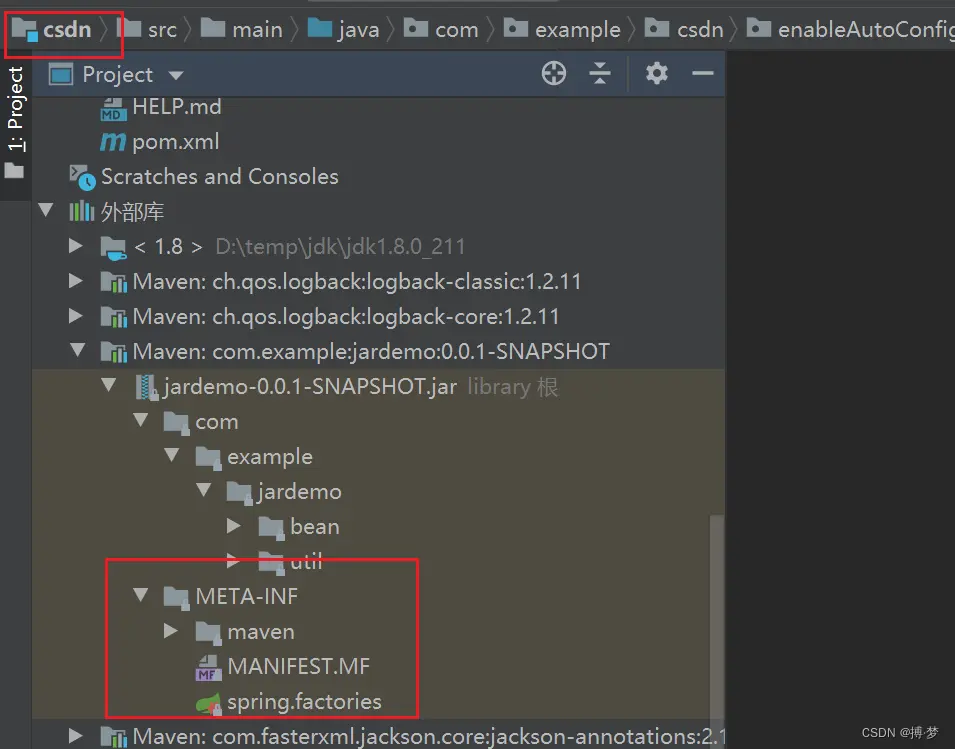
注:有的人可能在打包SDK的时候,发现resource目录下的文件没有打包进去,请修改pom.xml文件配置:
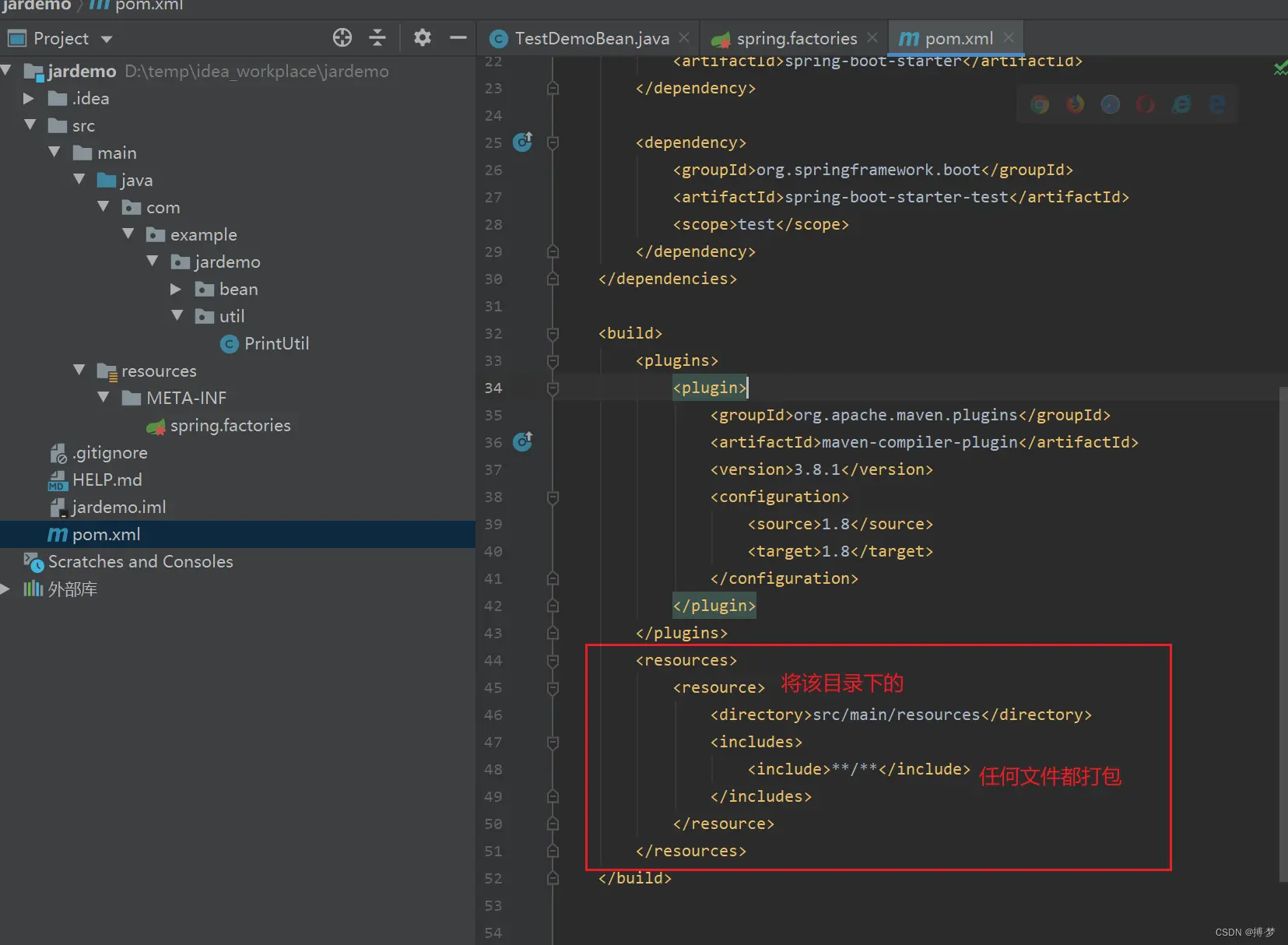
6、重新查看测试代码:
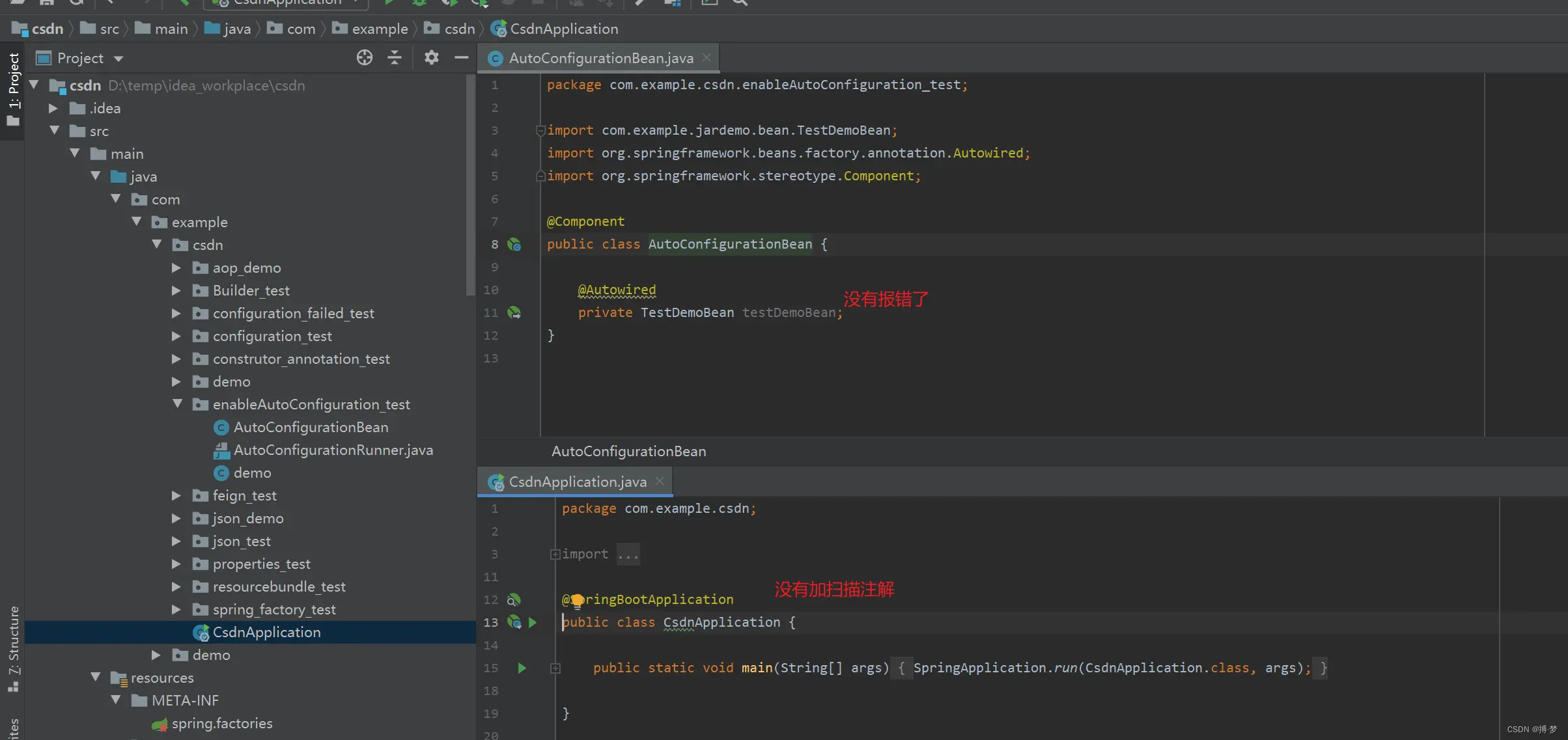
1、上述内容主要是在说:提供SDK的时候,为了方便别人可以使用本SDK的bean对象,需要在其resource/META-INF目录下创建spring.factories文件,使用EnableAutoConfiguration 把需要变成bean对象的类变成bean对象。
2、这样子其他项目再引用该SDK的时候,不用在启动类中编写需要扫描的路径
其实配置类可以使用@ConfigurationProperties+@Component:但是因为如下的原因,不被建议:
(1)我们知道这种方式是spring在启动的时候来扫描该类上有@Component的时候,才会把它变成bean对象,又因为是在SDK(第三方jar包),因此需要在spring.factories中EnableAutoConfiguration加上该配置类路径,使其可以被spring扫描到
(2)所以存在一个问题,如果配置项很多了,岂不是你这个spring.factories中EnableAutoConfiguration加上该类的路径巨多,维护也不方便,如果在提供方的SDK中存在一些配置项需要配置,如下:
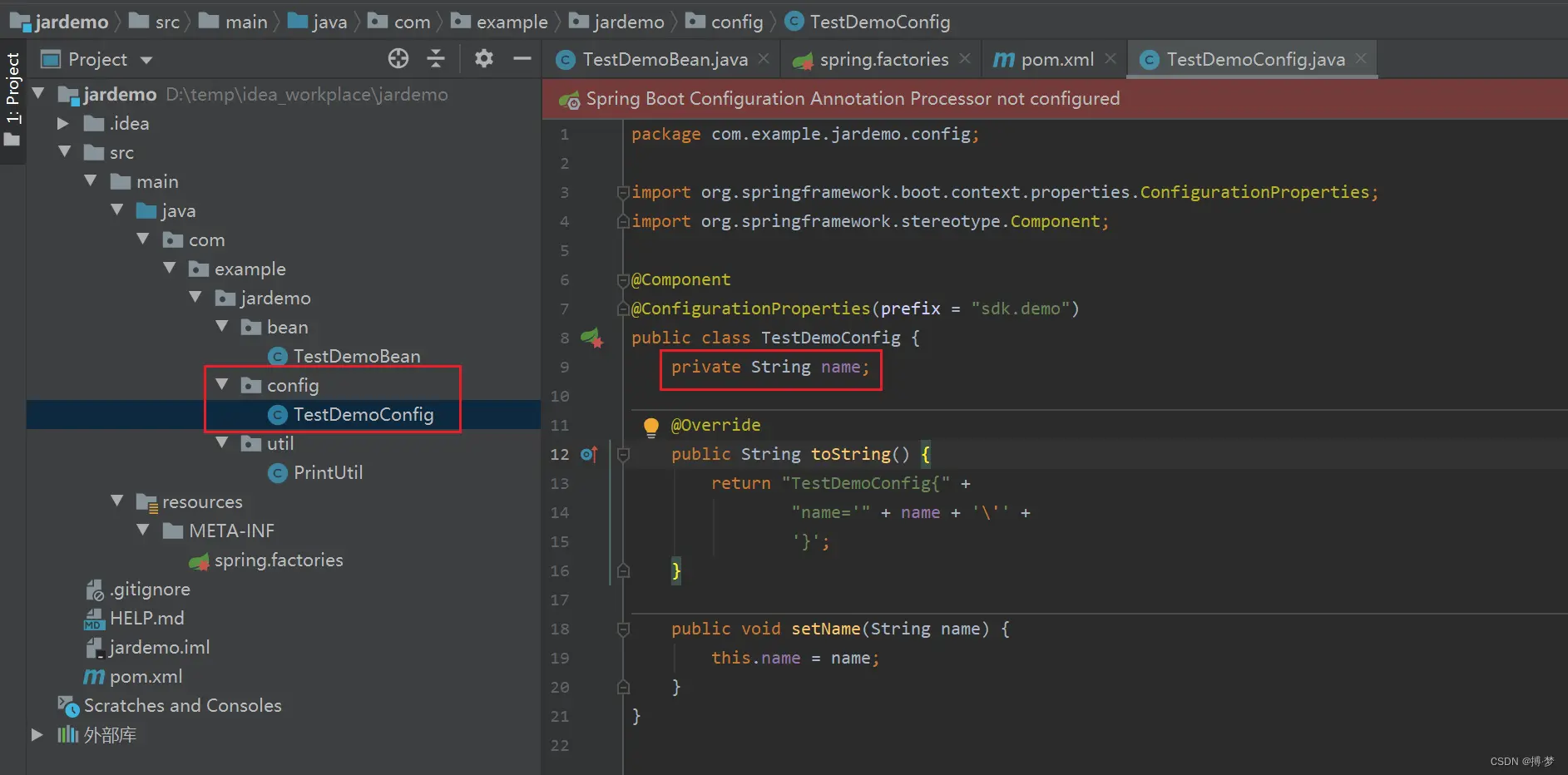
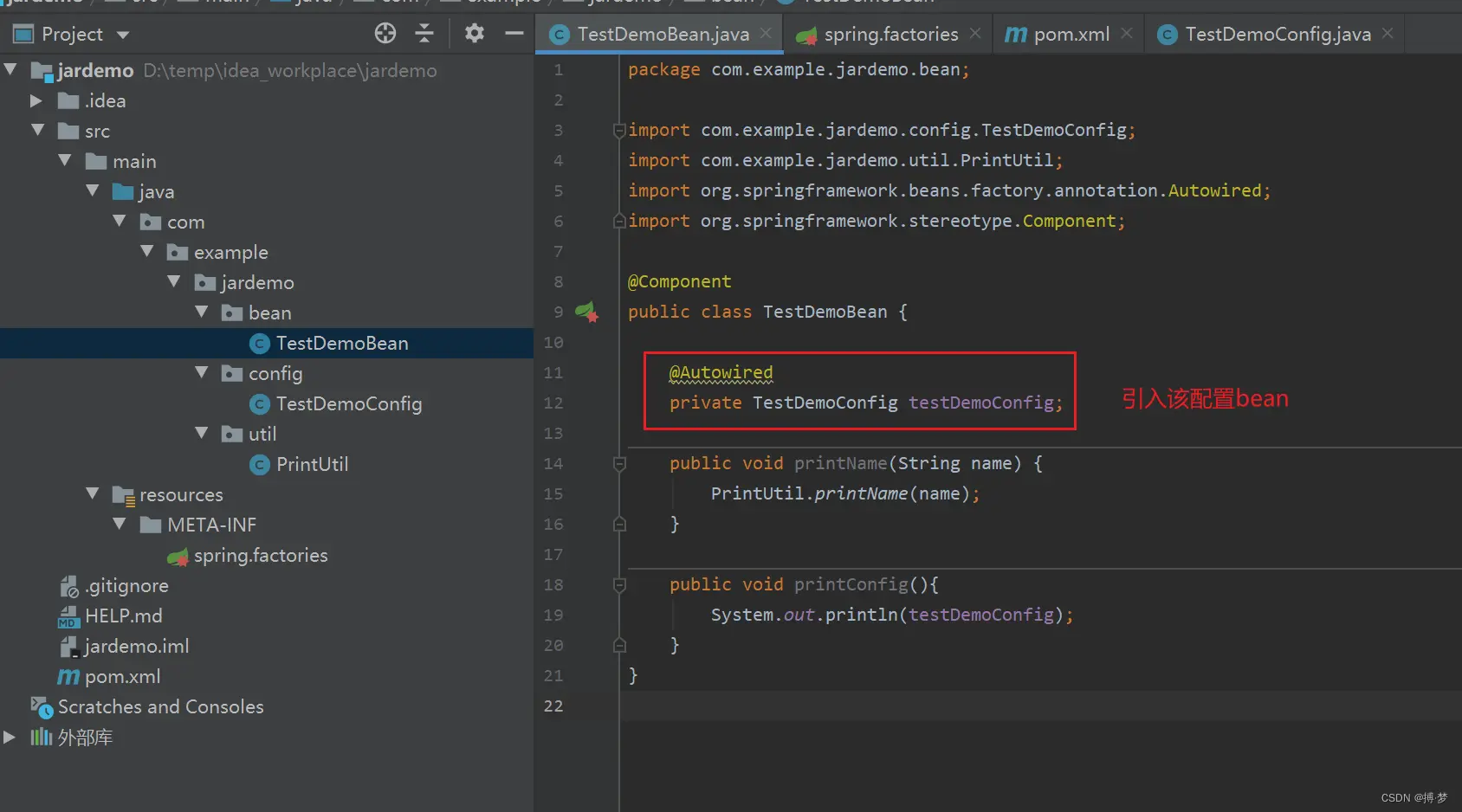
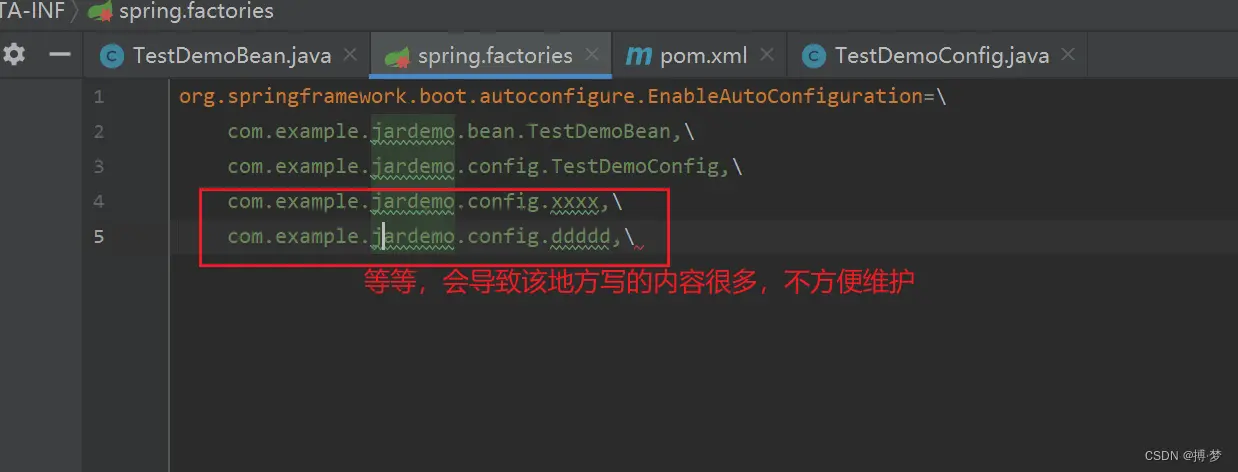
因此,该配置类我们可以使用@EnableConfigurationProperties呀,在需要使用该配置类的上面加上这个注解,会自动把该@EnableConfigurationProperties注解指定的类对象,创建bean对象,这样子就不用再写到 spring.factories上面了:
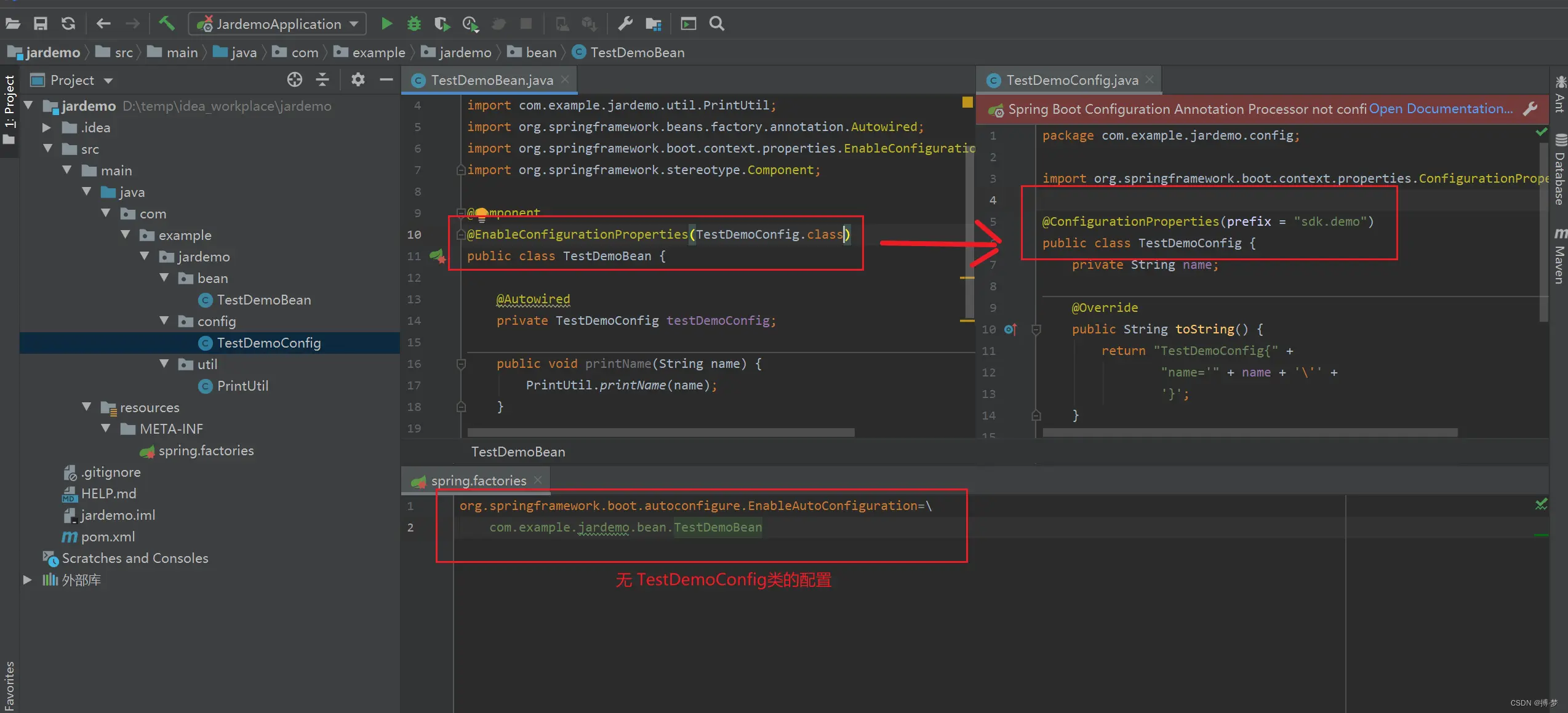
重新打包,试一下

总结
可以简单地理解: @ConfigurationProperties+@Component = @EnableConfigurationProperties,深究的铁子们可以动手操作一下,加深理解与印象。在工作中,没有固定说使用哪一个。根据个人习惯使用即可。
文档信息
- 本文作者:L1Chenxv
- 本文链接:https://l1chenxv.github.io//2024/08/18/EnableConfigurationProperties-annotation/
- 版权声明:自由转载-非商用-非衍生-保持署名(创意共享3.0许可证)